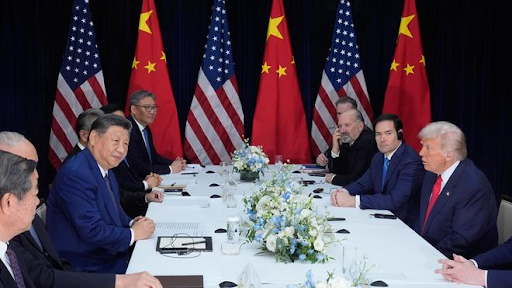




Copyright infringement not intended
Picture Courtesy: https://www.ctbto.org/our-mission
The recent statement from the executive secretary of the Comprehensive Nuclear-Test-Ban Treaty Organization (CTBTO) highlighted the role of the Global Monitoring system in maintaining International Security.
On 5th October 2024, two earthquakes in Iran raised concern over Potential nuclear testing, this created a tension in the region. In the context of the ongoing conflict in West Asia, especially between Iran and Israel, these rumors were alarming. However, the executive secretary of the CTBTO Quickly clarified that these seismic events were natural and similar to previous earthquakes in the area.

It is an international body responsible for enforcing the Comprehensive Nuclear Test Ban Treaty (CTBT), which aims to prohibit all nuclear test explosions.
The headquarters is located in Vienna, Austria.
CTBT was opened for signature in 1996. As of now, it has been signed by 183 countries, and 164 nations have ratified the treaty, highlighting significant international support.
The treaty has not yet entered into force because it requires ratification by 8 states among 44 specific states, known as Annex-2 states. These are countries that have nuclear reactors or have significant nuclear technology. The 8 nations whose ratifications are still pending are:

The CTBTO operates the International Monitoring System (IMS), a network of more than 300 monitoring facilities across 89 countries. This system employs various technologies such as seismic, infrasound, hydroacoustic, and radionuclide monitoring to detect nuclear explosions worldwide, whether they occur above ground, underground or underwater.

Must Read Articles:
INTERNATIONAL AGREEMENTS RELATING TO NUCLEAR WEAPONS
Source:
|
PRACTICE QUESTION Q.Consider the following statements in the context of the Comprehensive Nuclear Test-Ban Treaty (CTBT): 1. It aims to establish a comprehensive ban on nuclear test explosions for both military and civilian purposes. 2. The Treaty has not yet entered into force because it requires ratification by all Annex-2 states. Which of the above statements is/are correct? A) 1 only B) 2 only C) Both 1 and 2 D) Neither 1 nor 2 Answer: C Explanation: Statement 1 is correct: The Comprehensive Nuclear-Test-Ban Treaty (CTBT) aims to establish a comprehensive ban on nuclear test explosions for both military and civilian purposes. Statement 2 is correct: 164 states have ratified the treaty out of 183 states that signed it, however, the treaty has not yet entered into force because it requires ratification by all Annex-2 states, these are states that have nuclear reactors or possess significant nuclear technology. |




© 2026 iasgyan. All right reserved